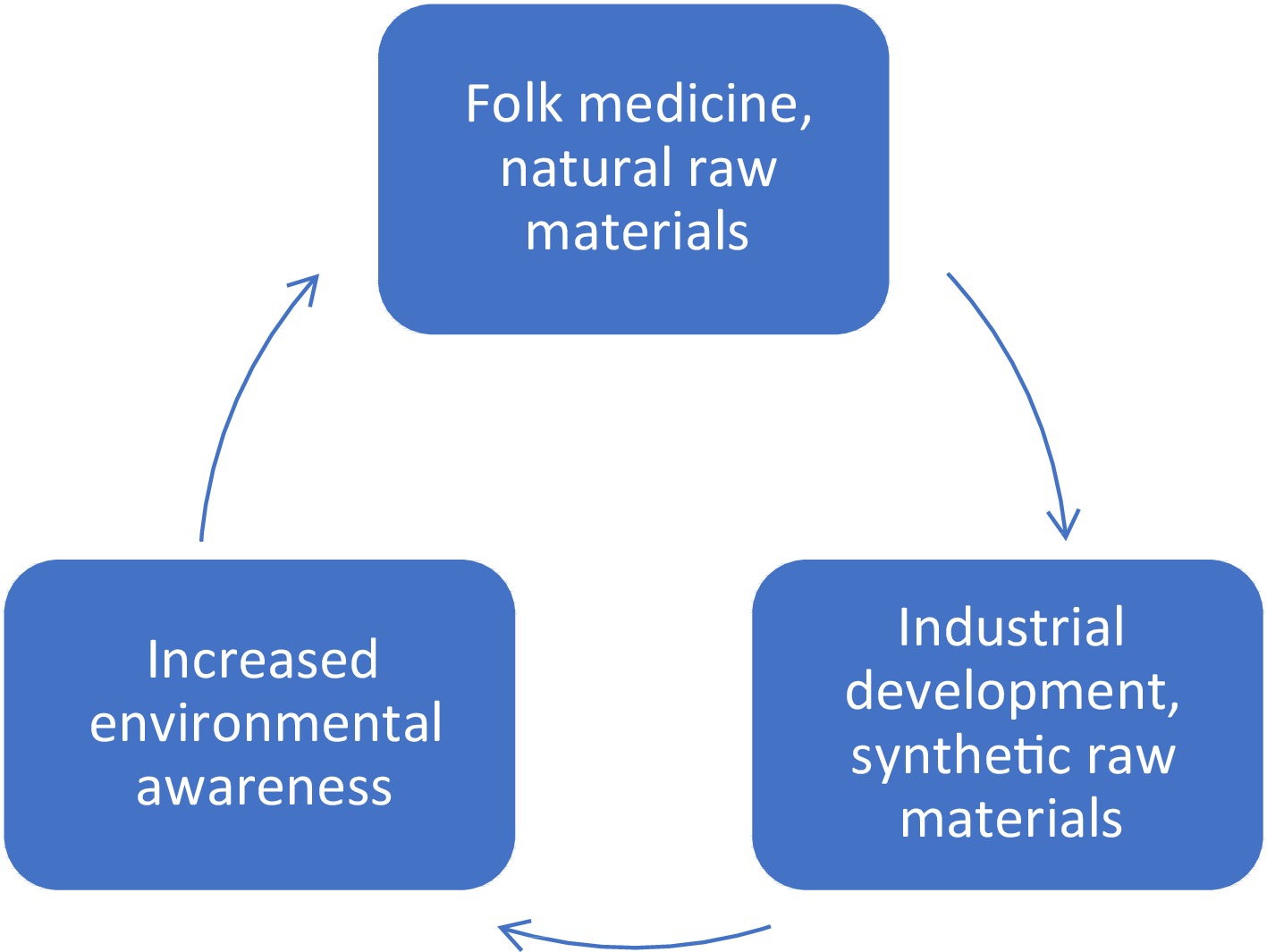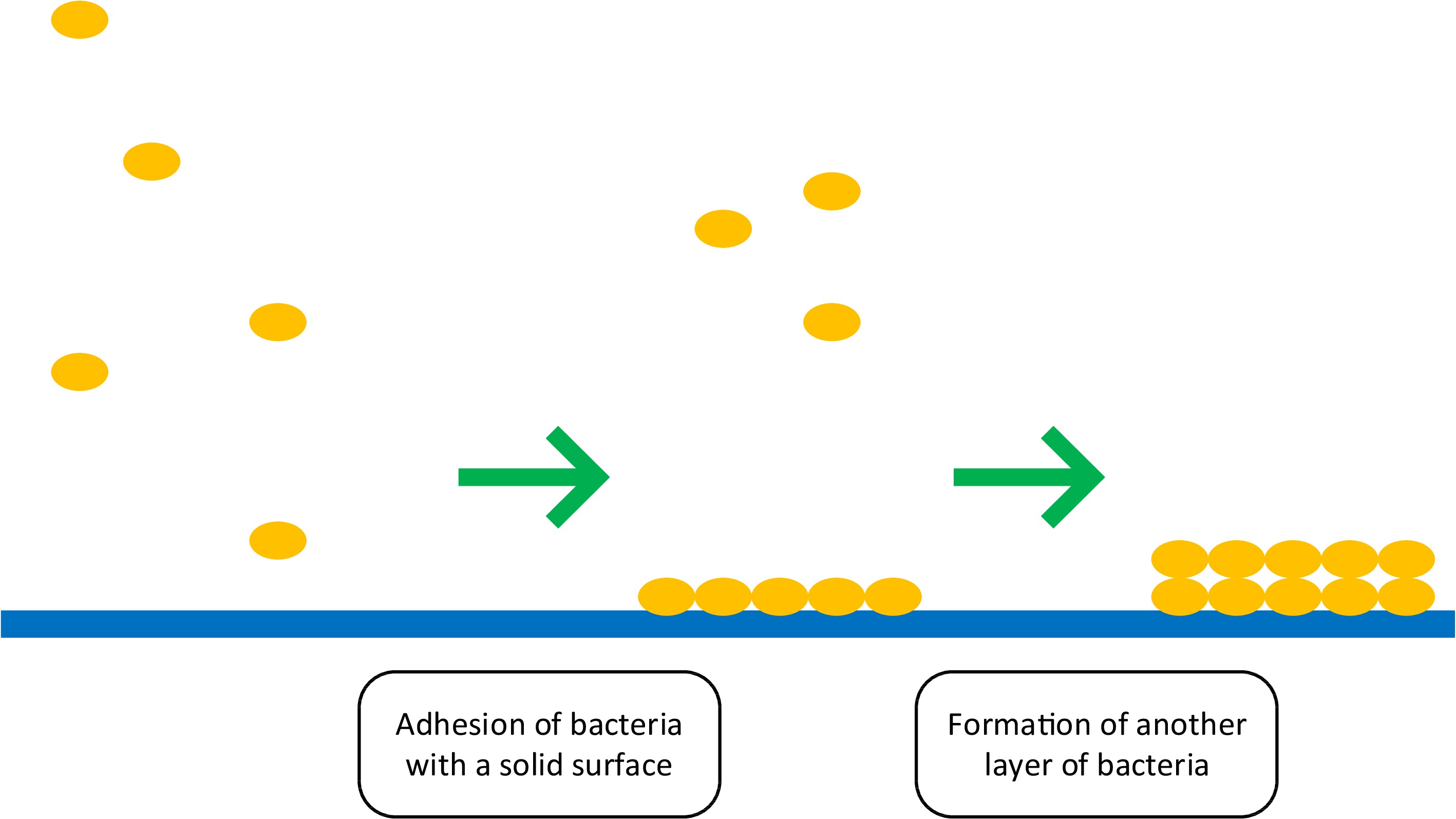-

Figure 1.
Drawing showing labels pointing to teeth, gums, roof of the mouth, bottom of the mouth, tongue, and inside of the cheek[3].
-

Figure 2.
Return to the methods of folk medicine through increased consumer awareness.
-

Figure 3.
Biofilm formation scheme.
-
Average no. of S. mutans at the beginning of therapy (CFU/mL) Average no. of S. mutans after therapy (CFU/mL) Research sample 14.23 × 10−5 ± 7.67 0.45 × 10−5 ± 0.28 Control sample 13.79 × 10−5 ± 11.11 30.22 × 10−5 ± 33.57 Table 1.
Average number of S. mutans at the beginning and end of treatment for the trial with R. prinoides extract and for the control trial[12].
-
Time of therapy Average plaque index Group A Group B Before mouth wash 1.493 ± 0.017 1.483 ± 0.027 First day after mouth wash 1.493 ± 0.017 1.483 ± 0.027 After 1 month 1.173 ± 0.045 1.293 ± 0.018 After 2 months 0.853 ± 0.055 1.065 ± 0.049 After 3 months 0.683 ± 0.050 0.795 ± 0.022 Table 2.
Results of the mean values of the plaque index in both groups.
-
Concentration
of Robusta
coffee extractMean growth inhibition zone [mm] +
standard deviationP. gingivalis A.
actinomycetemcomitansS. viridans 0% (control test) 0.00 ± 0.00 0.00 ± 0.00 0.00 ± 0.00 6.25% 0.00 ± 0.00 0.00 ± 0.00 0.00 ± 0.00 12.50% 13.14 ± 0.24 8.40 ± 0.22 12.15 ± 0.25 25.00% 16.59 ± 0.17 12.20 ± 0.10 14.95 ± 0.10 50.00% 19.18 ± 0.18 16.15 ± 0.12 18.15 ± 0.19 Table 3.
Results of the mean periopathogenic bacterial growth inhibition zone with standard deviation after using Robusta coffee extract at different concentrations.
-
Plant Rosmarinus officinalis L. Punica granatum L. Rosa centifolia L. Curcuma longa L. Active ingredients Gallotannin, chlorogenic acid,
p-coumaric acidGallotannin, quercetin or kaempferol Gallic acid, gallium, p-coumaric acid, derivative of quercetin Curcumin Table 4.
Active compounds detected by HPLC from plant extracts (Rosmarinus officinalis, Punica granatum, Rosa centifolia, and Curcuma longa).
Figures
(3)
Tables
(4)